Estimated reading time: 10 minutes
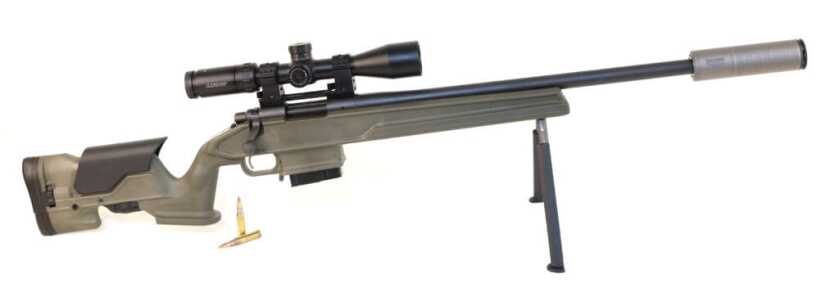
The new SilencerCo Scythe-Ti is arguably the most advanced rifle-caliber sound suppressor in the world. The Scythe-Ti represents a mystical synergistic melding of cutting-edge suppressor design with state-of-the-art materials science. Short, lightweight, rugged, and effective, the Scythe-Ti makes your target shooting more neighborly, your hunt more productive, and your home defense carbine more effective. There are upwards of three million sound suppressors in the NFRTR (National Firearms Registry and Transfer Record). This is the top of the freaking heap.
Table of contents
Origin Story

The earth’s core is predominantly molten iron. We’ll not be running out of that stuff anytime soon. Flavor your iron with a little carbon and you get steel. Steel is cheap, tough, relatively easy to work, and ubiquitous. That’s why we use it for everything from razor blades to battleships. However, steel has its liabilities. For one thing, it is fairly heavy. Unless you mix in a spot of chromium it is also bad to corrode. As a result, sensible folk don’t use steel to make airplanes and spacecraft. For truly exotic applications, engineers must look a bit farther afield.
William Gregor was born in 1761 in Cornwall, England. Gregor was a clergyman by trade, but he had a weird fascination with minerals. Some folks are into TikTok, video games, guns, or collecting stamps. William Gregor lived for rocks.

When he wasn’t actively tending to his church, Gregor was out hunting for peculiar rocks and then dragging them home for analysis. I can only imagine the conversations he must have had with Mrs. Gregor when he plopped a fresh rucksack full of dirt on the dinner table. In 1791 while picking through a sample of black sand he had harvested from the Manaccan Valley near his home, Gregor discovered a curious previously-unknown metal he christened menaccanite after its point of origin.
Later that same year, a German chemist named Martin Heinrich Klaproth found the same stuff in the naturally-occurring mineral rutile. Impressed with this weird metal’s light weight and obvious strength, Klaproth named the mystery material Titanium. As titanium had a bit more zing than maccanite, the Greek mythology-inspired moniker stuck.
It All Starts with Quality Ingredients
Titanium is indeed curious stuff. Sporting an atomic number of 22 and an atomic mass of 47.867, titanium occurs naturally in the form of oxides that must be refined to get usable material. Titanium is the ninth-most abundant element in the Earth’s crust, making up roughly 0.63% of the crust by mass. It is the seventh-most abundant metal. While titanium enjoys some truly extraordinary properties, when properly alloyed it also has the greatest strength-to-density ratio of any known metal. Even unalloyed, titanium is as strong as some steels but at a markedly lower weight.
In addition to being tougher than John Wayne’s jockstrap, titanium also resists corrosion in a way that approaches the supernatural. Where seawater and chlorine will just eat up lesser stuff, titanium generally just shrugs it off. That makes titanium the ideal starting point for some of mankind’s most exotic contrivances.

Critical components of jet engines, missile systems, and spacecraft are all routinely crafted from titanium. It is also an integral component of such stuff as dental implants and orthopedic prostheses. Other less obvious applications include photocatalysts, white pigments, jewelry, and juice for producing smoke screens.
As common as titanium is, it can still be tough to refine in quantity. The world’s four leading producers are China (52%), Japan (24%), Russia (16%) and Kazakhstan (7%). Throughout the Cold War, titanium was considered a strategic mineral that was carefully stockpiled by the US government.
So if titanium is so awesome, why don’t we use it for everything from rollerblades to toasters? Well, compared to uber-cheap steel, titanium is indeed expensive. It can also be fairly grouchy to weld and solder. To keep from rendering the material brittle, titanium must be welded in an inert environment of either argon or helium. That’s pretty tough to do. It is simply that SilencerCo has broken the code on the process.
Technical Details
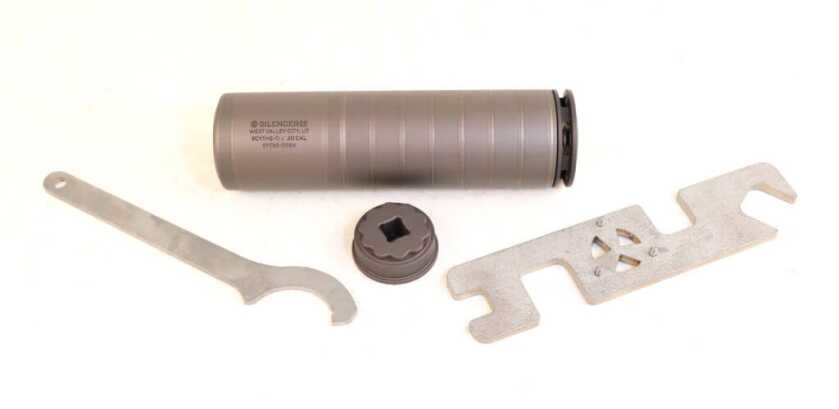
The Scythe-Ti is essentially maintenance-free. The back end can be set up for a direct thread 5/8×24 mount that comes with the can or a SilencerCo ASR quick-release mount. All the tooling required to swap mounts comes with the suppressor.
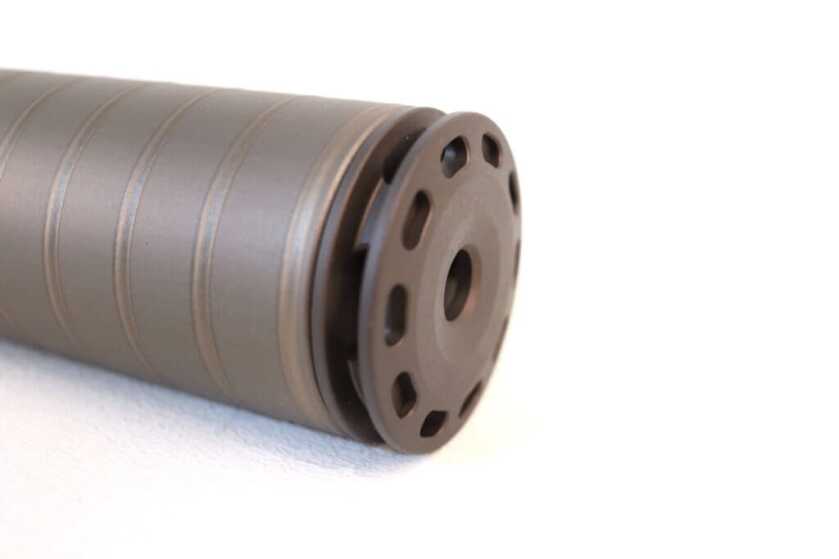
The far end of the Scythe-Ti comes equipped with a Single-Point Anchor Brake. This nifty trinket captures a bit of the chaos left over after the muzzle blast has been tamed and diverts it to the side to help mitigate recoil. It also looks just super cool.
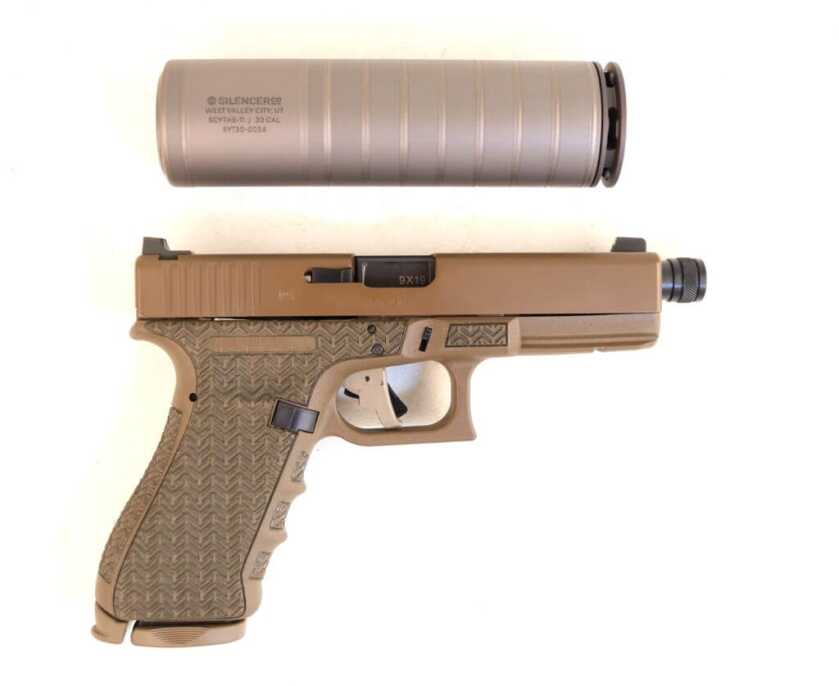
I mentioned that the Scythe-Ti is lightweight. Hefting this can for the first time it feels almost weightless. The Scythe-Ti is six inches long and weighs a paltry 7.3 ounces. Despite its apparent lack of substance, the Scythe-Ti is rated for use on anything up to and including the .300 Remington Ultra Magnum. Be it .22LR, 5.56x45mm, 7.62x51mm, or the mighty .300 RUM, the Scythe-Ti really doesn’t care. Don’t run it on rock and roll, but there are also no minimum barrel length restrictions. Titanium is tough stuff. This is one seriously stalwart sound suppressor.
READ MORE: How To Clean Your Silencer
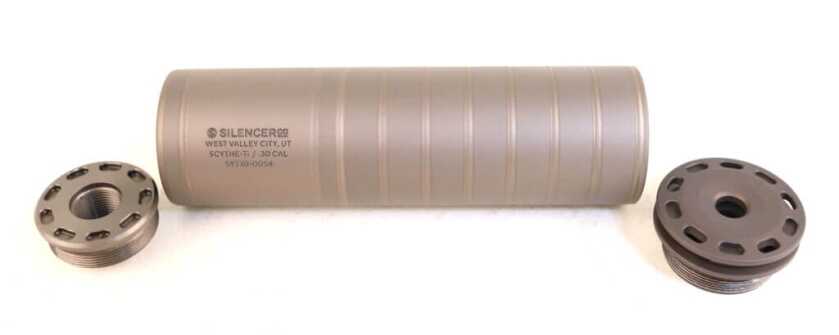
The mount and the Anchor Brake thread into place and are easily removed with the included tooling. The rest of the can, specifically the outer tube and baffle stack, are assembled at the factory and then robotically welded. Wipe it off from time to time if you must, but there’s not a whole lot to do to keep the Scythe-Ti chugging right along.
Practical Tactical

Sound suppressors are the very embodiment of physics. A high-end can like the Scythe-Ti will excise almost all the bark out of a high-powered rifle. However, the overall system can still make quite a lot of racket with full-power rounds. Under those circumstances, most of the noise is coming from the supersonic bullet crack. Any time anything travels faster than 1,125 feet per second in dry air it is going to produce a sonic boom. That’s not just a good idea, that’s the law.
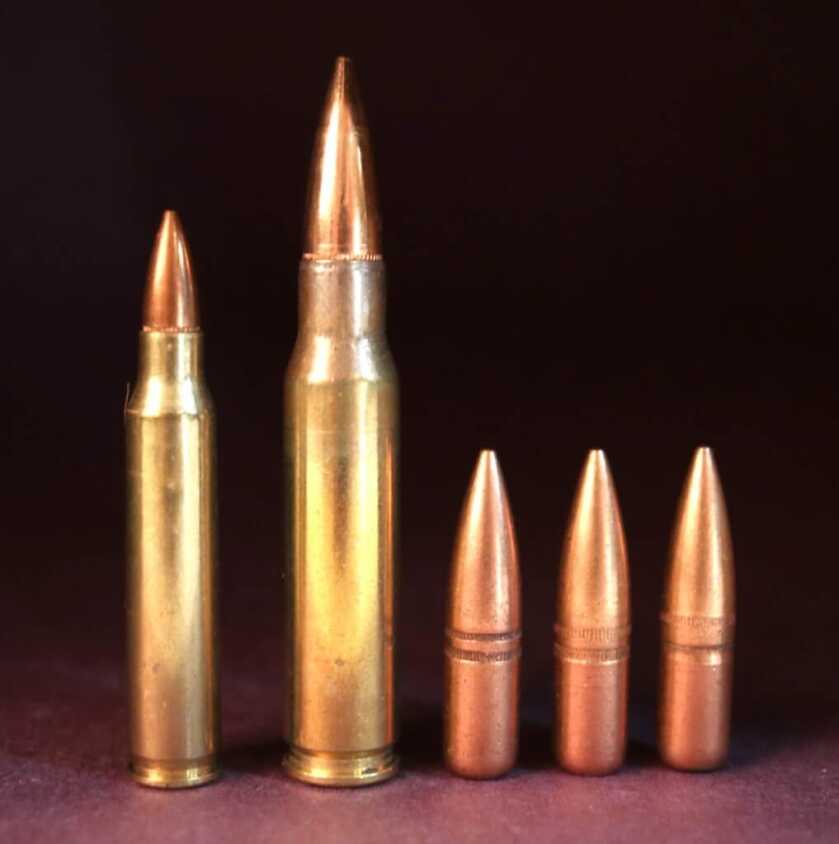
The true measure of a rifle sound suppressor is the noise it creates when firing subsonic ammo. The factory sort is expensive, so I roll my own. The setup costs for a single-stage reloader are not prohibitive. I use Trail Boss powder intended for cowboy action shooting. This stuff has a large volume so it does a fine job of filling a cartridge case even when undercharged to produce subsonic performance. I just ran the rounds through my Remington 700 bolt gun and titrated the powder charge up to about 1,100 feet per second. When pushing GI-surplus 7.62mm tracer bullets these home-rolled loads produce some lovely downrange effects as well. Through the Scythe-Ti they are just stupid quiet.
How quiet might you ask? The SilencerCo website has scads of decibel data, but I’m too dim to understand all that. Practically speaking, my DIY subsonic handloads make movie silencers seem loud by comparison. No kidding, you could shoot these things indoors in another room and mistake the noise for a generous cough.
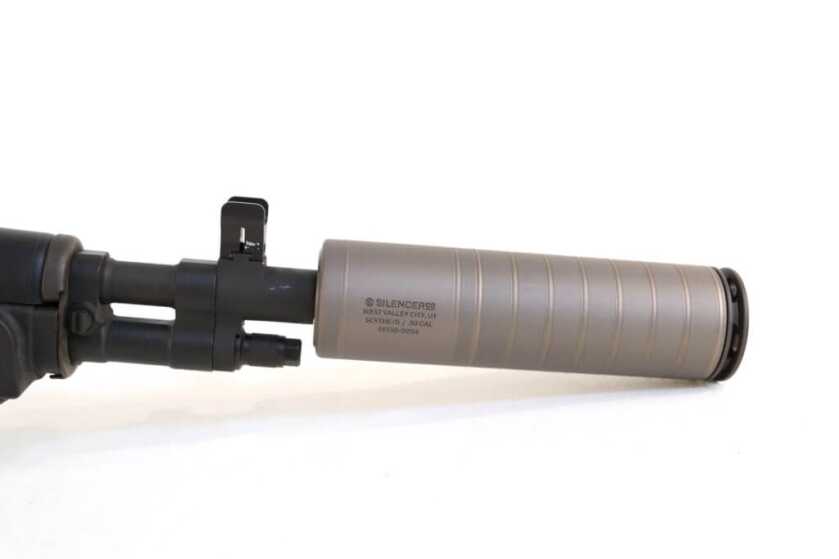
So what can you use it for? I have handloaded subsonic 5.56mm rounds, but doing so just produces an expensive .22 rifle. By contrast, at appropriate ranges, a .30-caliber rifle equipped with the Scythe-Ti and running subsonic loads remains proof against such stuff as pigs and whitetail deer. Once you get your rifle rig tweaked and dialed in you’ll never want to shoot a noisy gun again.
Ruminations
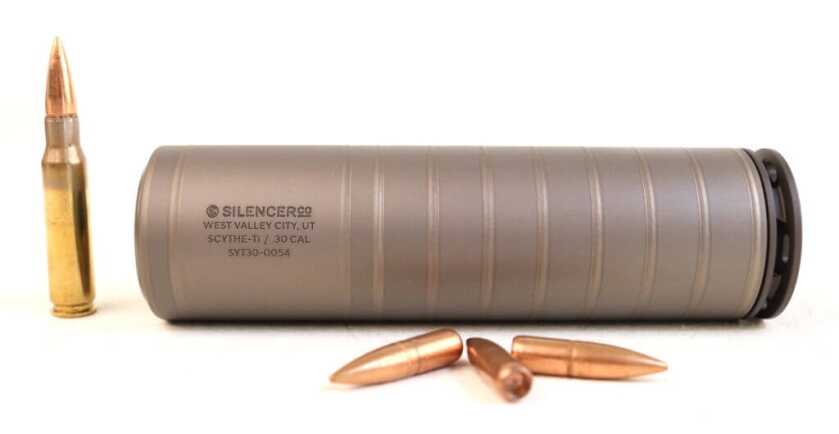
The Scythe-Ti represents the pinnacle of sound suppressor tech and materials science. As a result, it isn’t cheap. The MSRP with a direct thread mount is $1,174. However, what you get for that not-insubstantial outlay is a can that weighs about nothing and, if not unduly abused, will last forever.

Diaphanous, beautiful, effective, and mean, the SilencerCo Scythe-Ti makes good guns great. Whether it is your favorite bolt-action precision rig or your go-to .30-caliber battle rifle, the Scythe-Ti tames the racket without adding any significant weight or length baggage. This is one seriously killer can. You can find further details here.
*** Buy and Sell on GunsAmerica! ***


I must have missed the dB reading in all the extra wording.. and flowery writing skills of the author.
Will, terrific article, but I’d like to compliment you on your writing style. I very much appreciated and enjoyed your wit and euphemisms that made for really rich reading. They say it takes genius to recognize genius; as an author of a half-dozen books or so, I adjudge you as being brilliant…ever think about writing fiction?